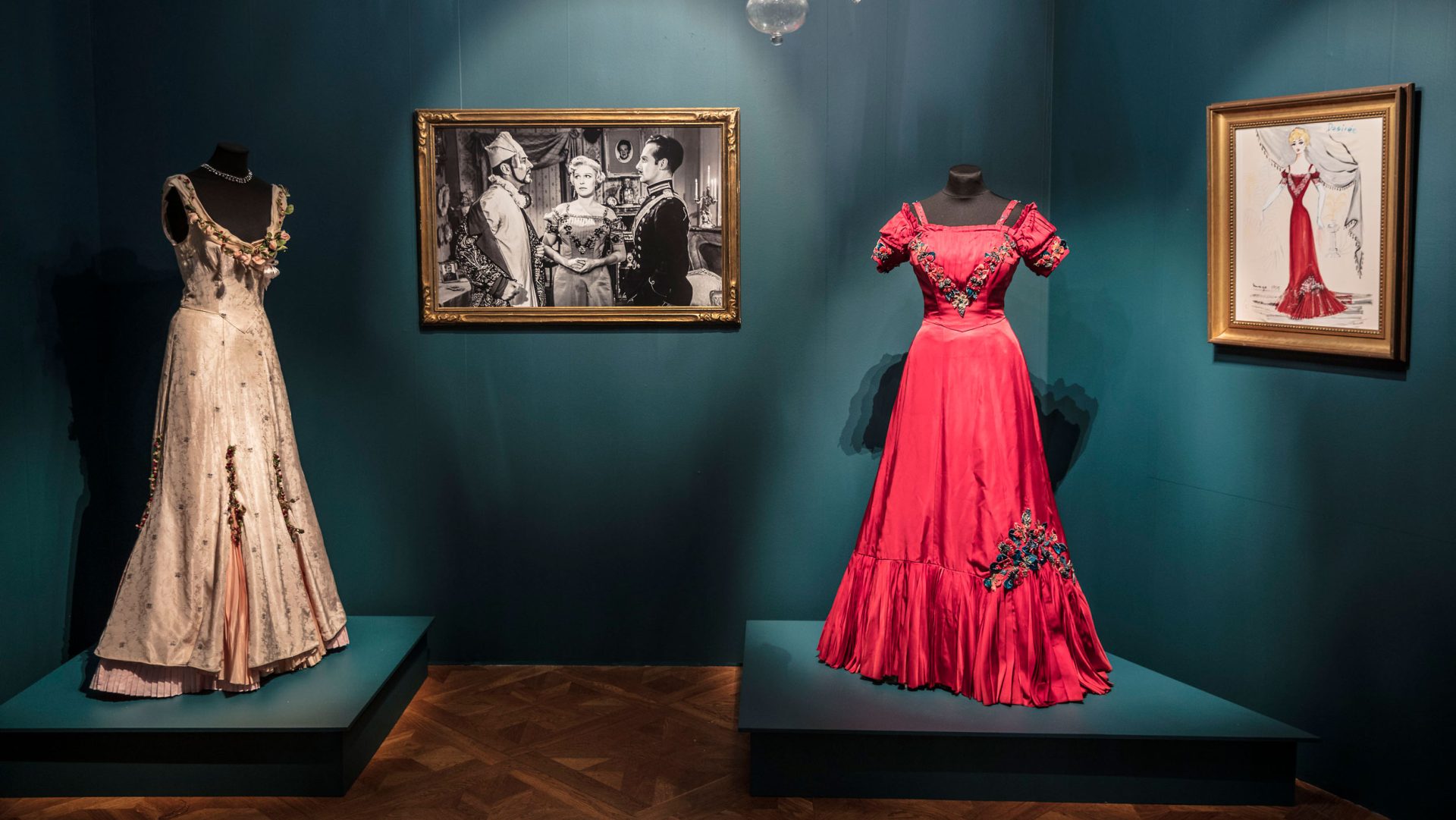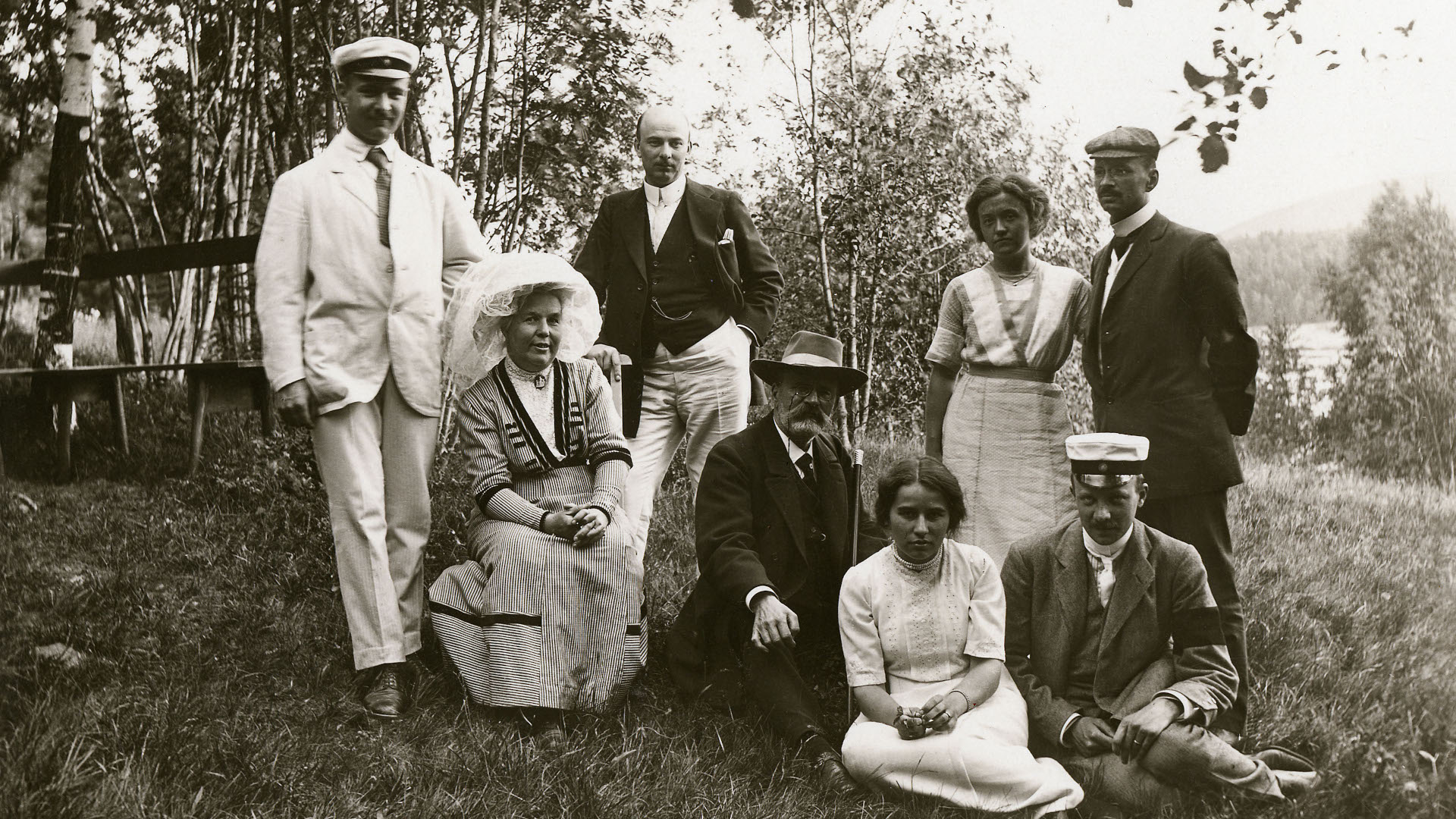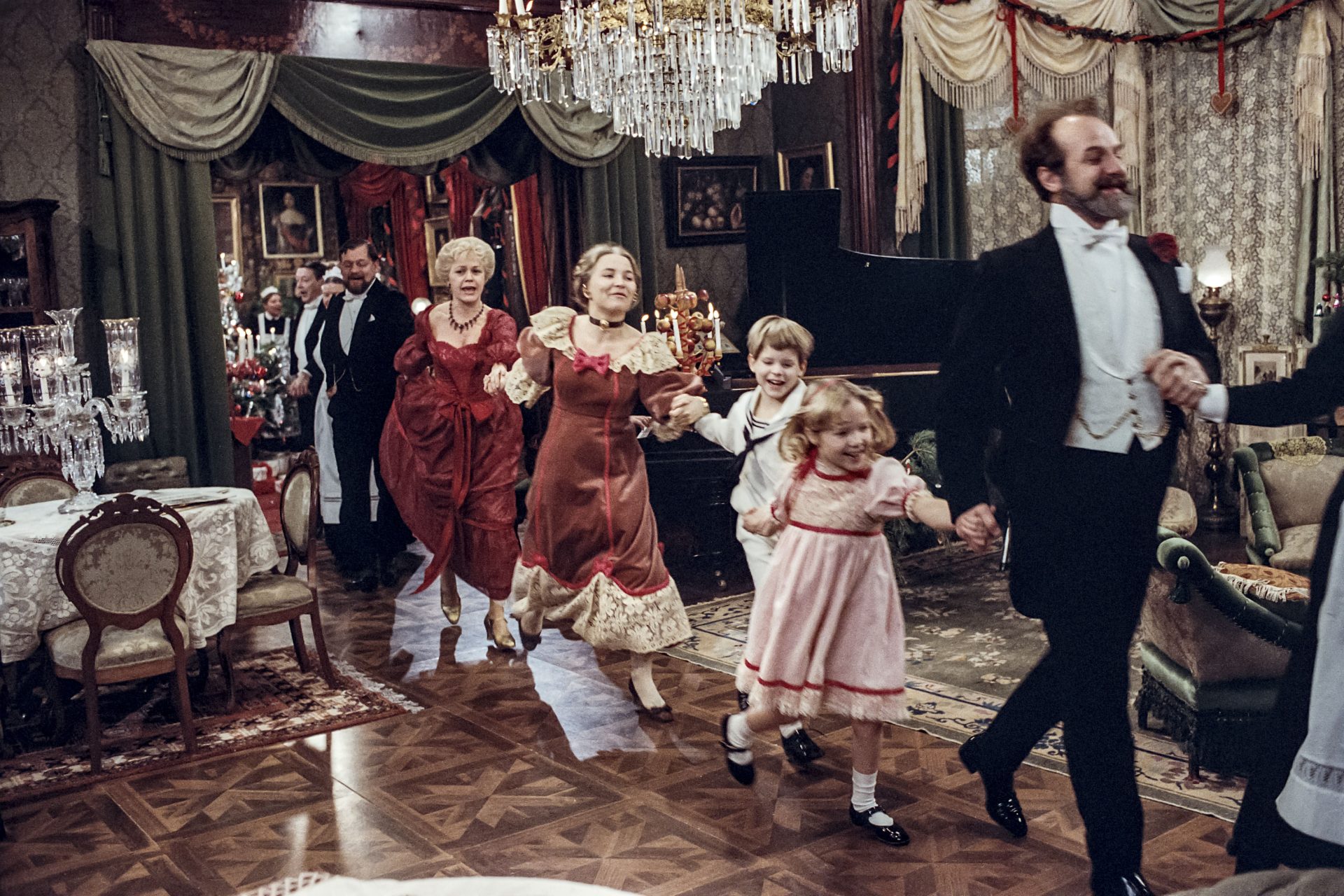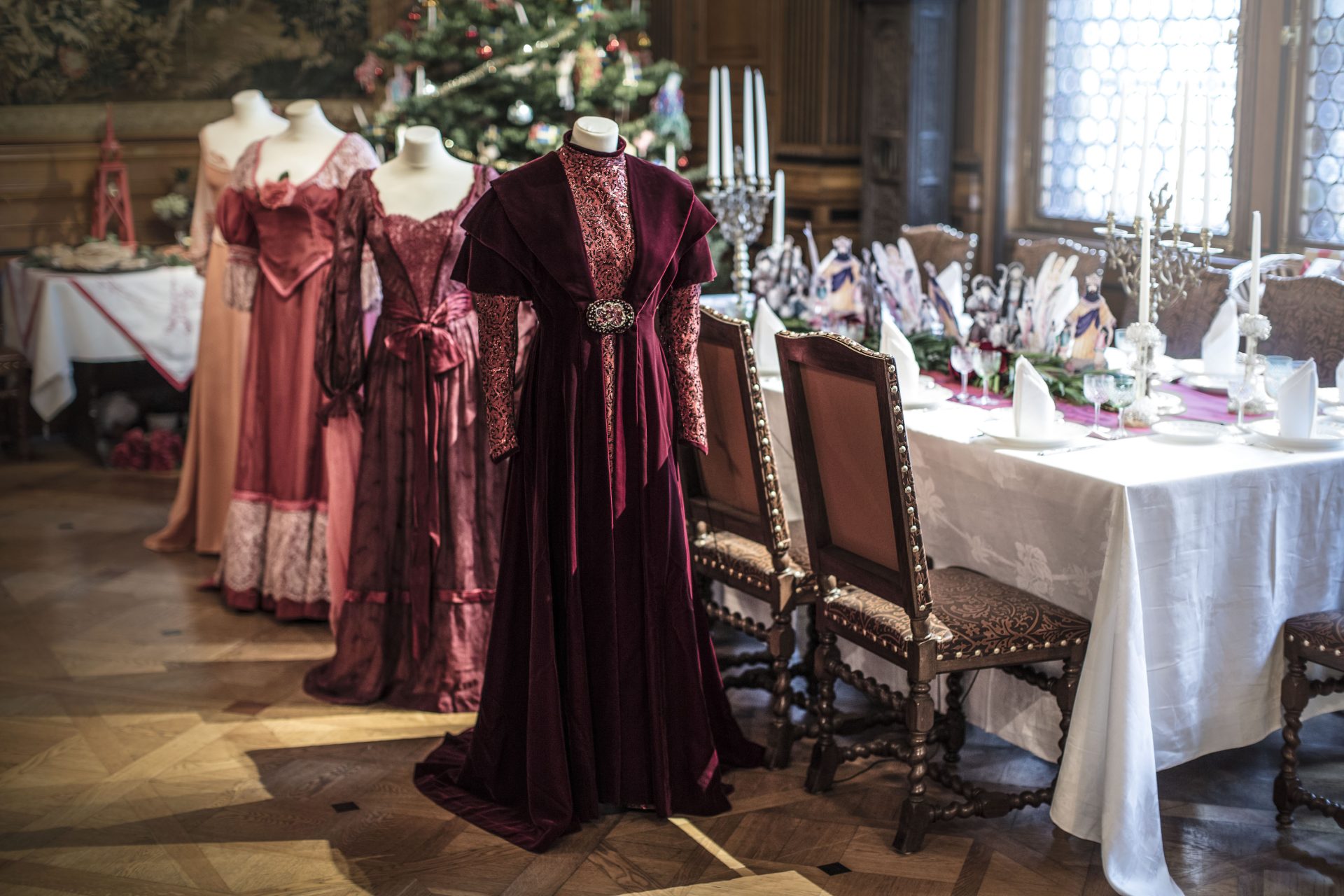
10 November 2017 – April 24 2018
Bergman on fashion
– Women’s roles & costumes in Bergman’s films
During the exhibition Bergman on Fashion we met women’s central roles in Ingmar Bergman’s rich production of film – often referred to as the “Bergman Woman” or the “Bergman type.” In his films, it was usually the women who provided the colour, while the men provided a dark background that made the women shine, and not just figuratively.

Bergman’s film costumes have never been highlighted in this way before. The exhibition was based on extensive research, we found costumes that had not been shown since the films were made. It was also especially fun to be able to exhibit costumes from Bergman’s black and white films. “You had no clue what colour were,” comments Anna Bergman, set designer and costume designer and co-producer of the exhibition.
With Hallwyl House as a setting and with the life that was once lived here, the turn of the century and the “discreet charm” of the bourgeoisie were depicted; the ever-present servant woman, the fashion-conscious younger woman, and the ageing matriarch. There are many similarities with Wilhelmina von Hallwyl and the woman who often occupied a central place in Bergman’s narrative.
In the museum’s bedroom floor, costumes from different characters from the films were shown, and here we also met Bergman as a person and filmmaker by showing family photos from his own childhood. The parallels were clear between Bergman’s growing up childhood milieu and his cinematic world of images.
Sketches, pictures and drawings
With the help of the costumes, preserved costume sketches and still images from the films, a common picture of both the textile craftsmanship of the costumes and the facts about the films was obtained.

The importance of the costume designers’ contributions to the films and the impact of current fashion trends on the design of the costumes in Bergman's historical costume dramas were revealed. A good costume is characterised by that it becomes like a second skin and it should grow together with the character.

Costumes from the following films were displayed:
- Sawdust and Tinsel (1953)
- Smiles of a Summer Night (1955)
- Wild Strawberries (1957)
- The Virgin Spring (1960)
- The Pleasure Garden (1961, director Alf Kjellin, script Ingmar Bergman)
- All These Women (1964)
- Cries and Whispers (1973)
- Fanny and Alexander (1982)
- The Best Intentions (1991, director Bille August, script Ingmar Bergman
- Monday's Child (1992, director Daniel Bergman, script Ingmar Bergman)
- In the Presence of a Clown (1997).
Collaboration
Exhibition idea and scenography: Anna Bergman, scenographer and costume designer and Nils Harning, works with costume / props at Stockholm University of Arts.
Also a collaboration with SCFI/Stockholm Costume & Fashion Institute.
Editor: Lotta Lewenhaupt, author and fashion journalist.